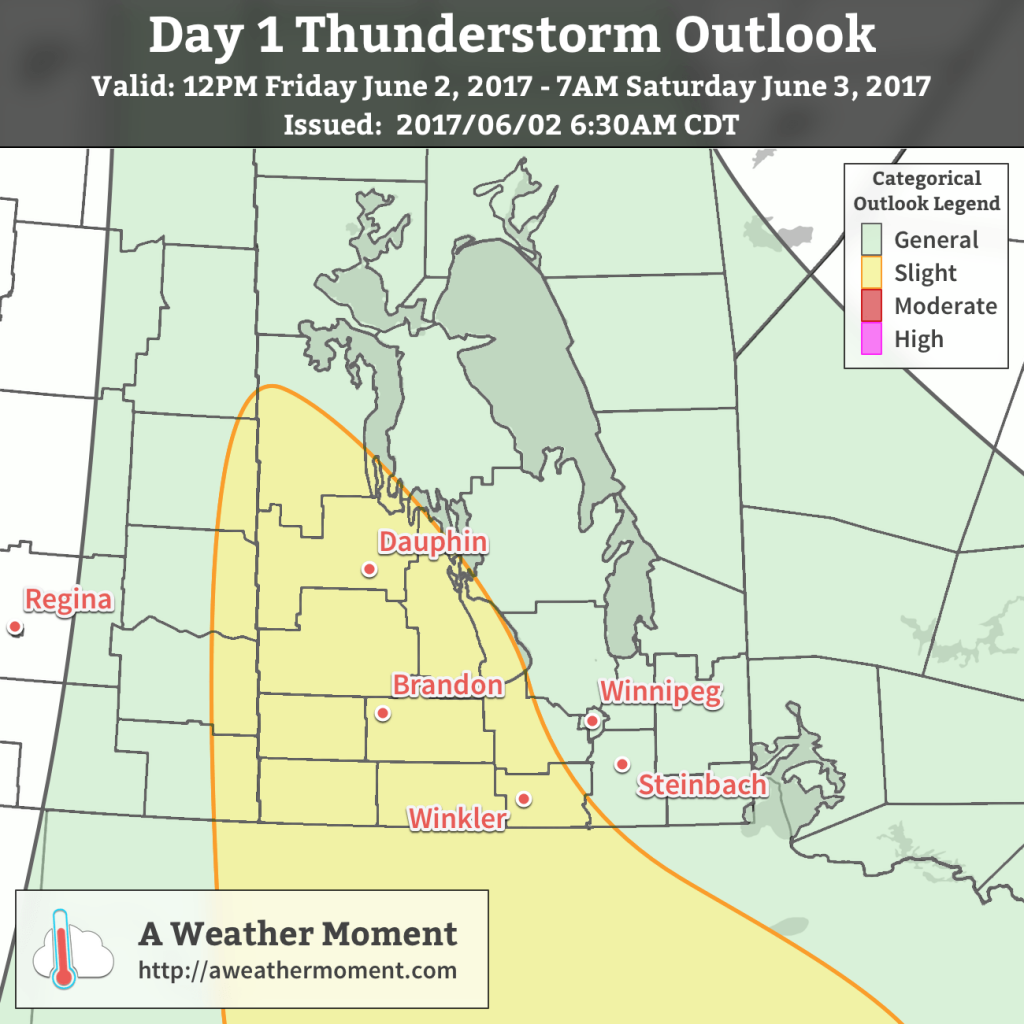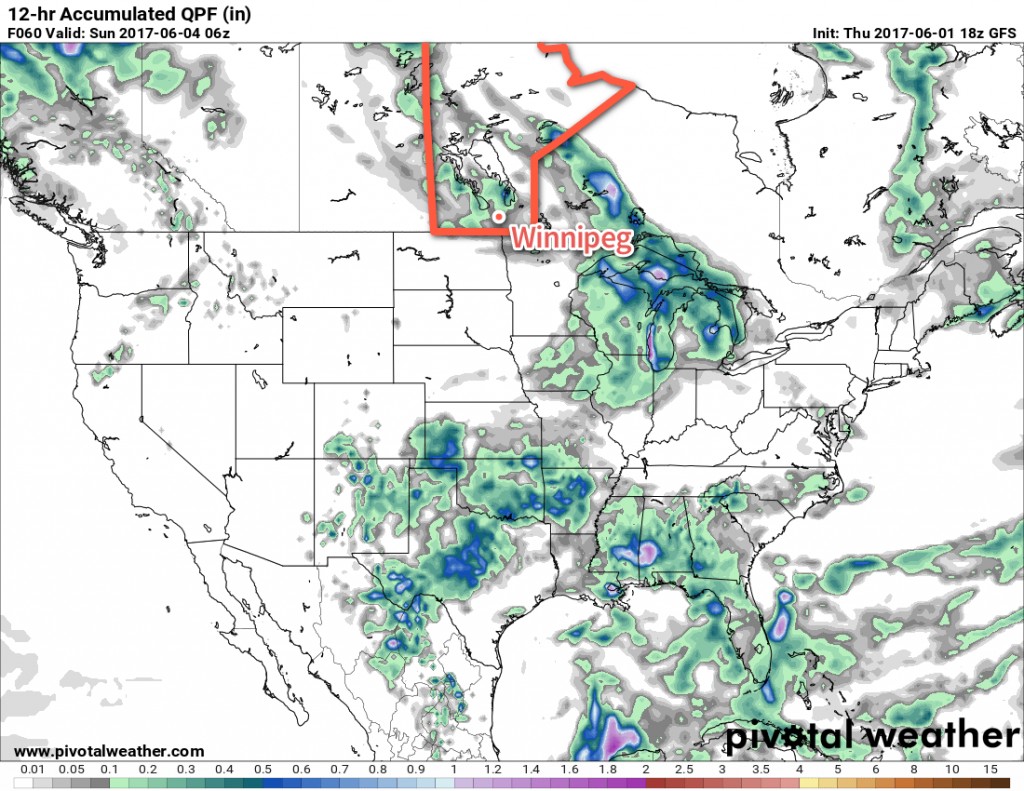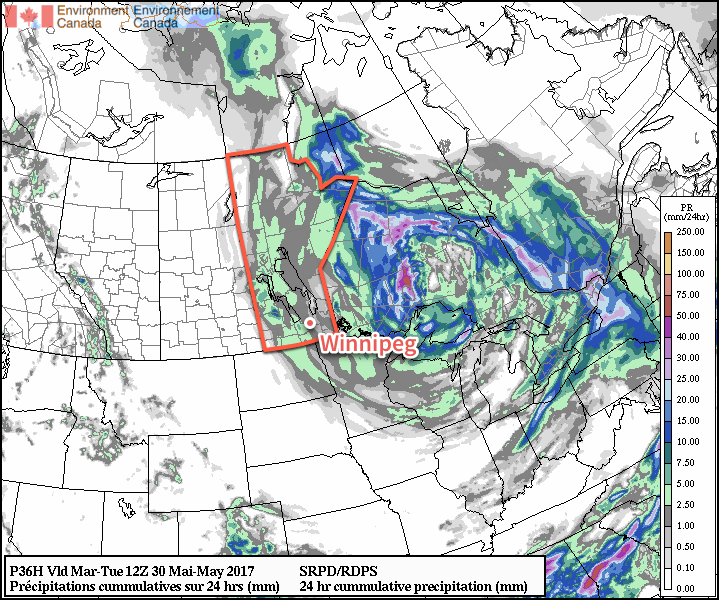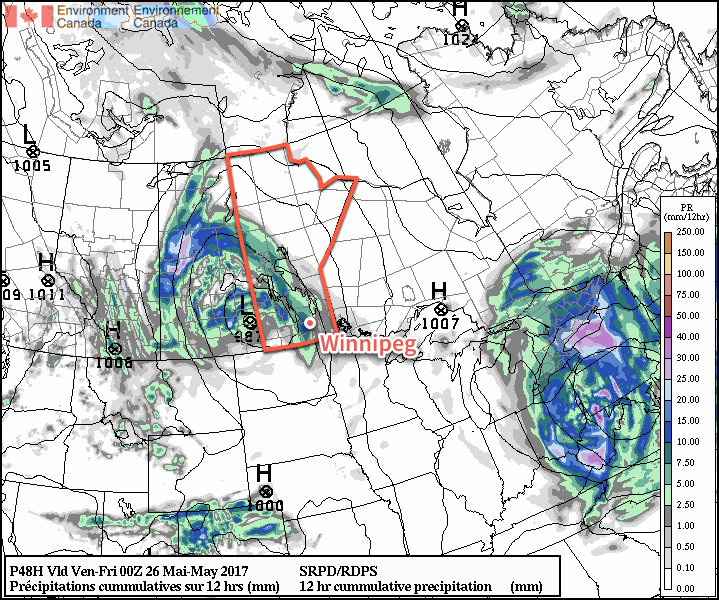Winnipeg will continue to see above normal temperatures as an upper-level ridge basks the eastern Prairies in summer warmth. Conditions will turn more unsettled on Tuesday, though, with the chance of showers and thunderstorms moving into Southern Manitoba.
Today will be a beautiful day in Winnipeg as temperatures climb to a high near 29°C under sunny skies. Winds will increase out of the southeast to 20 km/h for the afternoon. There’s really not much to say about today; it’ll be great! Temperatures will dip to a mild low near 17°C tonight with partly cloudy skies.
Tomorrow will bring slightly more interesting weather to the region as a trough of low pressure pushes into the region through the morning. Skies will start off partly cloudy, but Winnipeg will see clouds increase through the morning. From midday into the evening, Winnipeg & the Red River Valley will see a decent chance of some showers or thunderstorms, but no severe weather is expected at this point. Temperatures will climb to a high near 26°C with breezy winds out of the south to 30-40 km/h in the morning becoming light for the afternoon.
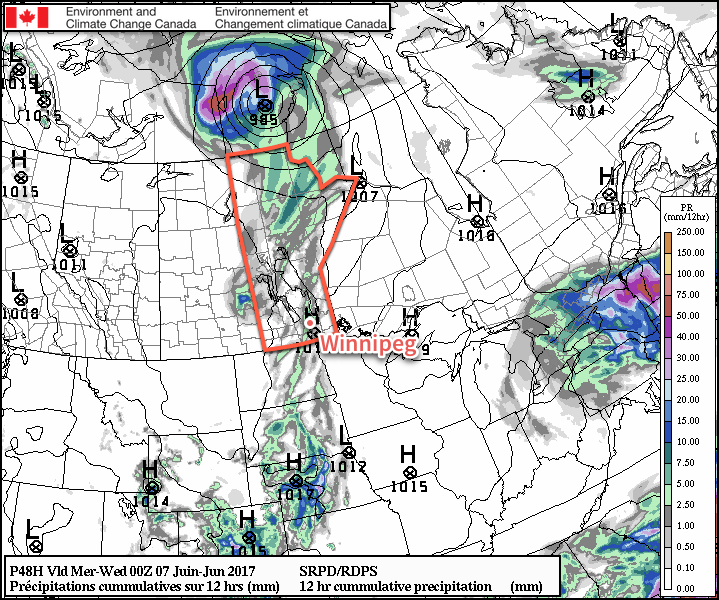
The clouds will stick around tonight along with a continued slight chance of showers as temperatures dip to a low near 15°C.
Wednesday will bring mainly cloudy skies to Winnipeg & the Red River Valley and slightly cooler temperatures with highs near 23°C and relatively light winds. There will be a continued chance for showers as a weak disturbance hangs back over the region behind Tuesday’s trough. Expect a low near 12°C on Wednesday night with light northerly winds and clearing skies.
Long Range
The remainder of the work week looks pleasant with daytime highs in the mid-20’s and mostly sunny skies. Heading into the weekend, it looks like the heat will return with Saturday potentially hitting 30°C once again, however things may turn stormy as multiple low pressure systems track through the region. We’ll be keeping an eye on things as we get closer to the weekend!
Winnipeg’s seasonal daytime high is currently 22°C while the seasonal overnight low is 9°C.
